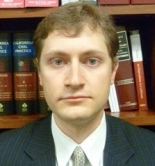Grinberg: Reminder About Defense Burden on Apportionment
Tuesday, July 5, 2022 | 0
Let’s take a moment to look at a panel decision on apportionment.

Gregory Grinberg
Applicant petitioned to reopen a resolved claim and, after a trial, the workers' compensation judge issued an award of 59% permanent disability. However, defendant sought reconsideration, arguing that the qualified medical evaluator had apportioned 50% of the increased permanent disability to a non-industrial motor vehicle accident.
Now, if we were hanging out on the school playground in the '90s, I would yell at the top of my lungs “SYKES!” and you would know that you had been bamboozled. However, since we’re not on a school playground in the '90s right now, I will not do that, and instead, congratulate myself on yet another witty pun.
You see, the case is actually Sykes v. Los Angeles County Metropolitan Transit Authority, and the Workers' Compensation Appeals Board did no such thing, affirming the unapportioned award. Why?
The WCAB acknowledged that the initial burden of existence and extent of permanent disability was on the applicant, but the burden of proving apportionment lay with the defense. While the QME offered an opinion as to causation, he also wrote that he had not reviewed any of the medical records pertaining to the MVA.
The WCAB rejected the apportionment opinions of the panel QME because he “apportioned to the 2016 non-industrial [MVA] without review of the complete medical records pertaining to applicant’s treatment and condition in relation to the accident,” and the QME “does not explain how and why the nonindustrial accident contributed to applicant’s current level of disability for her lumbar spine.”
The opinion then goes on to provide guidance on how a defendant can meet its burden for apportionment and how the defendant did not adequately carry it in the Sykes case.
So, here is a quick rundown of what the WCAB is looking for, according to the panel opinion in Sykes.
If the defendant is trying to establish apportionment under Labor Code Section 4663 (causation of permanent disability), there must be substantial medical evidence, presumably based on review of relevant medical records, and an explanation of how and why the nonindustrial event caused a portion of the current permanent disability.
In some off-the-record discussions, I have had WCJs summarize this as “but-for the nonindustrial event, what would the permanent disability have been?”
Sometimes this burden is not one that can be readily met. Applicants sometimes conduct themselves with less integrity than one would hope, claiming not to remember where treatment was received or claiming no treatment was received for prior events.
Sometimes a physician can review magnetic resonance images or X-ray films and conclude that some of the damage is much older than the current claimed date of injury, and then describe why that damage is causing some of the current permanent disability. But this requires legwork on the part of the defense attorney and sometimes even a deposition. Each claims adjuster has to run the analysis: Is the delay in resolving the case and the extra litigation cost worth the chance of reducing permanent disability?
If the defendant is trying to establish apportionment under Labor Code Section 4664 (prior award of permanent disability), it is defendant’s burden to produce proof that the prior award was issued and also to prove overlap. After all, a prior award for an injury to the left elbow does not trigger the conclusive presumption that there is permanent disability for the right knee.
Again, this may require legwork on the part of the defense to establish a clear record, both in subpoenaing the WCAB file for the prior claim and showing the records to the medical-legal examiner and eliciting comment on apportionment.
The Sykes case is a very good reminder for us in the defense community that the conclusion section of the QME report is not where the work ends. We have to look at our own evidence with a critical eye and lay the necessary foundation before we proceed to trial.
Applicant attorneys are certainly looking for weaknesses in the defense case; defendants are best served by identifying those weaknesses while discovery is still open rather than when it is long closed.
Gregory Grinberg is managing partner of Gale, Sutow & Associates’ S.F. Bay South office and a certified specialist in workers’ compensation law. This post is reprinted with permission from Grinberg’s WCDefenseCA blog.



Comments